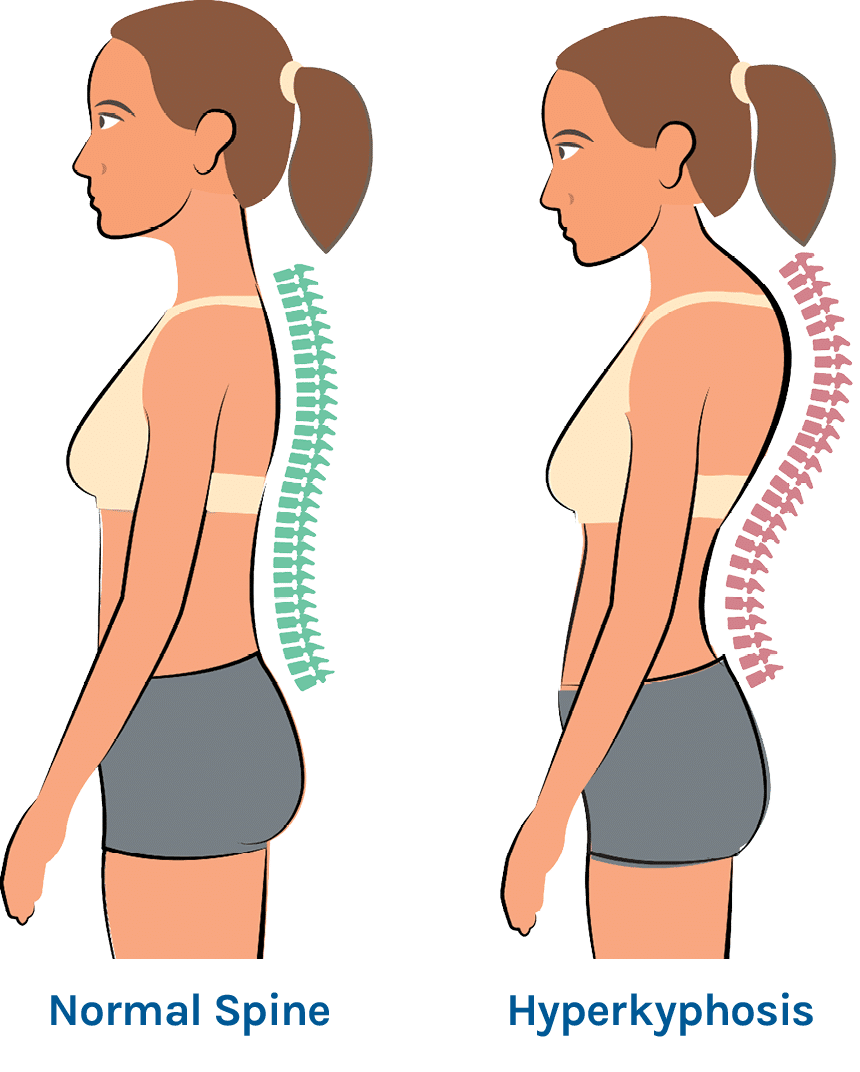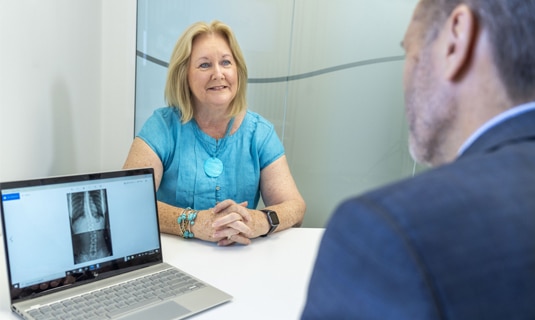While scoliosis is quite widely known, the term hyperkyphosis is less familiar. If you’re just starting to learn about hyperkyphosis and how it relates to adolescents, you may have questions about its causes, implications for your child, and treatment options.
This article offers a detailed overview of hyperkyphosis, covering its causes, symptoms, and treatment options.
What is Hyperkyphosis?
The term kyphosis describes the gentle natural shape of the mid-back when viewed from the side. Hyperkyphosis is an increase in this natural shape, where the mid-back develops a more exaggerated rounding.
An increase in kyphosis in a child or adolescent should be investigated and assessed. If left untreated, hyperkyphosis can worsen over time, developing more symptoms and become more difficult to treat.
Types of Hyperkyphosis in Adolescents
There are two main types of hyperkyphosis that affect adolescents:
- Postural Hyperkyphosis: This is the most common type and often appears in adolescence. The rounding of the back is exaggerated due to poor posture. It is usually non-structural but can become structural if not corrected.
- Scheuermann’s Kyphosis: This type is caused by a structural abnormality in the vertebrae, where they form a wedge shape rather than a rectangular one. It often develops during adolescence and can progress with growth. This condition is more common in males.
Symptoms of Hyperkyphosis
In children and adolescents, hyperkyphosis can present with various symptoms, including:
- Poor posture with an obvious slouch or hunching appearance of the mid-back
- Pain in the mid-back (although this is not always a symptom)
- Spinal stiffness and tight muscles in the spinal and even the lower limb areas
- Forward neck and head posture. Possible neck and shoulder ache as well as headaches
In some cases, hyperkyphosis can also be present with a scoliosis at the same time.
Diagnosing Hyperkyphosis
Accurate diagnosis typically involves a physical examination and imaging tests such as X-rays. Recognising hyperkyphosis early is important for maximising non-surgical treatment options. Any unusual signs, such as pain or abnormal reflexes, should always be investigated.
Treatment Options for Hyperkyphosis
Early, non-surgical intervention can play an important role in treating hyperkyphosis in adolescents.
Kyphosis Specific Rehabilitation: Kyphosis specific exercise programs, such as ScoliBalance®, may be used for flexible or postural curves. Each patient would have a tailored program according to their curve, symptoms, and treatment goals. It is also an important addition to treatment for more severe and structural curves.
Custom Kyphosis Bracing: Scheuermann’s Kyphosis and large, more complex kyphosis curves may be managed by a custom designed kyphosis specific brace which is used in conjunction with kyphosis specific rehabilitation such as ScoliBalance. Brace wear, especially during periods of growth, can help improve or stabilise a worsening kyphosis.
Surgery: Surgery is generally reserved for severe cases where non-surgical treatments are not appropriate. Where possible, it is preferable to avoid surgery, through the use of early non-surgical management.
Treatment plans for hyperkyphosis should be customised to meet the individual’s unique needs and can often be combined for optimal management. Collaborating with healthcare professionals is crucial to develop a tailored treatment plan that aligns with the patient’s goals and lifestyle.
Proactive Management
Early detection and intervention are key in managing and treating hyperkyphosis in children and adolescents. Addressing the condition early can help prevent it from worsening and improve treatment outcomes.
At ScoliCare, we focus on the assessment and treatment of hyperkyphosis using a comprehensive, evidence-based approach. Our dedicated team provides personalised care plans, including specific exercise programs using the ScoliBalance treatment approach and custom-made kyphosis braces.
If you’ve noticed changes in your child or have questions about hyperkyphosis, contact our clinic for guidance and support.


